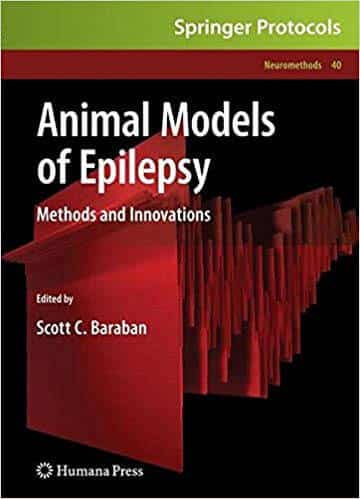Animal Models of Epilepsy: Methods and Innovations

By Scott C. Baraban
Animal Models of Epilepsy: Methods and Innovations PDF. With its complex anatomical, molecular, electrophysiological and behavioral components, epilepsy provides the neuroscientist with nearly boundless opportunities to examine basic neurobiological mechanisms. In Animal Models of Epilepsy: Methods and Innovations, prominent investigators in the field examine several novel models of epilepsy in mice as well as in genetically tractable “simple” species such as Drosophila melanogaster (fruit flies), Caenorhabditis elegans (worms), Xenopus laevis (tadpoles) and Danio rerio (zebrafish). While covering some traditional models, the volume also explores the newest innovations like modeling seizure activity in silica and advanced strategies for seizure detection and gene therapy. As a volume in the successful Neuromethods™ series, the chapters provide clear, step-by-step protocols and thought-provoking reviews of the most recent advancements in the field.
Comprehensive and cutting-edge, Animal Models of Epilepsy: Methods and Innovations is an ideal guide for scientists who wish to expand our understanding of the pathogenesis of this neurological disorder.
Read more: Experimental Surgical Models in the Laboratory Rat
| File Size | 5 MB |
| File Format | |
| Download link | Free Download | Become a Premium, Lifetime Deal |
| Support & Updates | Contact Us | Broken Link |
| Join Our Telegram Channel |  |
| More Books: | Browse All Categories |













![Ettinger’s Textbook of Veterinary Internal Medicine 9th Edition [PDF+Videos] Ettinger’s Textbook of Veterinary Internal Medicine 9th Edition [True PDF+Videos]](https://www.vet-ebooks.com/wp-content/uploads/2024/10/ettingers-textbook-of-veterinary-internal-medicine-9th-edition-100x70.jpg)

![Textbook of Veterinary Diagnostic Radiology 8th Edition [PDF+Videos+Quizzes] Thrall’s Textbook of Veterinary Diagnostic Radiology, 8th edition PDF](https://www.vet-ebooks.com/wp-content/uploads/2019/09/textbook-of-veterinary-diagnostic-radiology-8th-edition-100x70.jpg)






